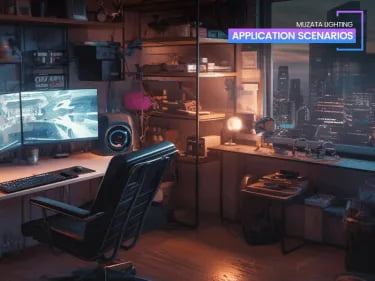TABLE OF CONTENTS
Welcome to the Luminous World of Art: How Gallery Lighting Transforms Perception
In the art world, the impact of gallery lighting is as pivotal as the brushstrokes on a canvas. A well-lit artwork not only invites admiration but also tells a story, guiding the viewer's eyes through a visual journey of shadows, colors, and textures. This blog delves into the nuances of gallery lighting, exploring innovative techniques, professional insights, and engaging discussions from platforms Quora, ensuring every art enthusiast appreciates the silent, luminous curator of art.

The Art of Illumination: Why Gallery Lighting Matters
In the realm of art galleries, lighting transcends mere illumination; it becomes a strategic force shaping viewers' perception and appreciation of artworks. Some answers on Quora succinctly capture this essence: "Why is the gallery lighting so crucial in an art gallery?"
Jessi Robson's Perspective: Emotional Impact and Color Fidelity

Jessi Robson eloquently highlights the emotional stakes involved in lighting artwork. She points out that the hues and contrasts in an artwork—details that artists painstakingly choose—can be completely lost under inadequate lighting. This underscores the critical role of gallery lighting in preserving the integrity of the colors chosen by the artist, which are essential for conveying the intended emotional and aesthetic impact. For instance, a subtle shift in gallery lighting can either enhance or obscure the depth and vibrancy of colors, directly affecting the viewer's emotional response. This insight calls for a precise calibration of lighting that respects the artist's original intent and enhances the viewer's engagement with the artwork.
Graham C. Lindsay's Insight: Adaptability and Dynamic Lighting

Graham C. Lindsay expands on the concept of lighting flexibility, discussing how different artworks might require unique lighting conditions. He mentions exhibitions where natural lighting and dynamically changing artificial lighting were used to distinct effects. This observation points to an emerging trend in gallery lighting—dynamic and adaptive lighting systems that can change in color temperature and intensity, potentially altering the viewer’s perception of the artwork over time or under different conditions. Such approaches can be particularly effective in exhibitions designed to evoke a specific atmosphere or where the interaction of light and art is part of the artistic narrative.
Anne Russell's Consideration: The Necessity of Natural Light and Preservation Concerns

Anne Russell emphasizes the ideal of simulating natural light in art galleries, particularly for the sake of older paintings and sensitive materials that might degrade under harsh artificial lighting. Her comment supports the preference for lighting solutions that mimic the clarity and intensity of natural daylight, ensuring that artworks are seen as intended without compromising their preservation. This highlights the delicate balance curators must maintain between optimal display conditions and the long-term health of the artwork, especially when dealing with vulnerable materials.

Professional and Specific Elaboration on Gallery Lighting
Integrating these insights, a professional approach to gallery lighting must consider several factors:
Color Accuracy and Emotional Integrity:
Ensuring that the lighting faithfully reproduces the artist’s chosen palette is crucial for maintaining the emotional and visual integrity of the artwork. This involves selecting lighting with a high Color Rendering Index (CRI) to ensure accuracy in color depiction.
Adaptive and Dynamic Systems
Implementing lighting systems that can adapt to different artworks and exhibition themes allows for a more nuanced presentation. These systems should be capable of adjusting in terms of intensity, color temperature, and even directional focus to cater to the specific needs of each piece.
Conservation and Intensity
The gallery lighting design must also prioritize the preservation of artworks, particularly those susceptible to light damage. This requires a careful balance of sufficient illumination to appreciate the artwork and low enough intensity to avoid accelerating degradation. Technologies such as LED lighting can offer solutions here, providing high-quality light with minimal UV and infrared emissions.
Diving Deeper: Tailoring Light to Each Masterpiece
In the realm of gallery lighting, each artwork demands a nuanced approach to illumination. Let's delve deeper into the technicalities from directional precision to ambient control that elevates and preserves the vibrancy of art across galleries worldwide.




